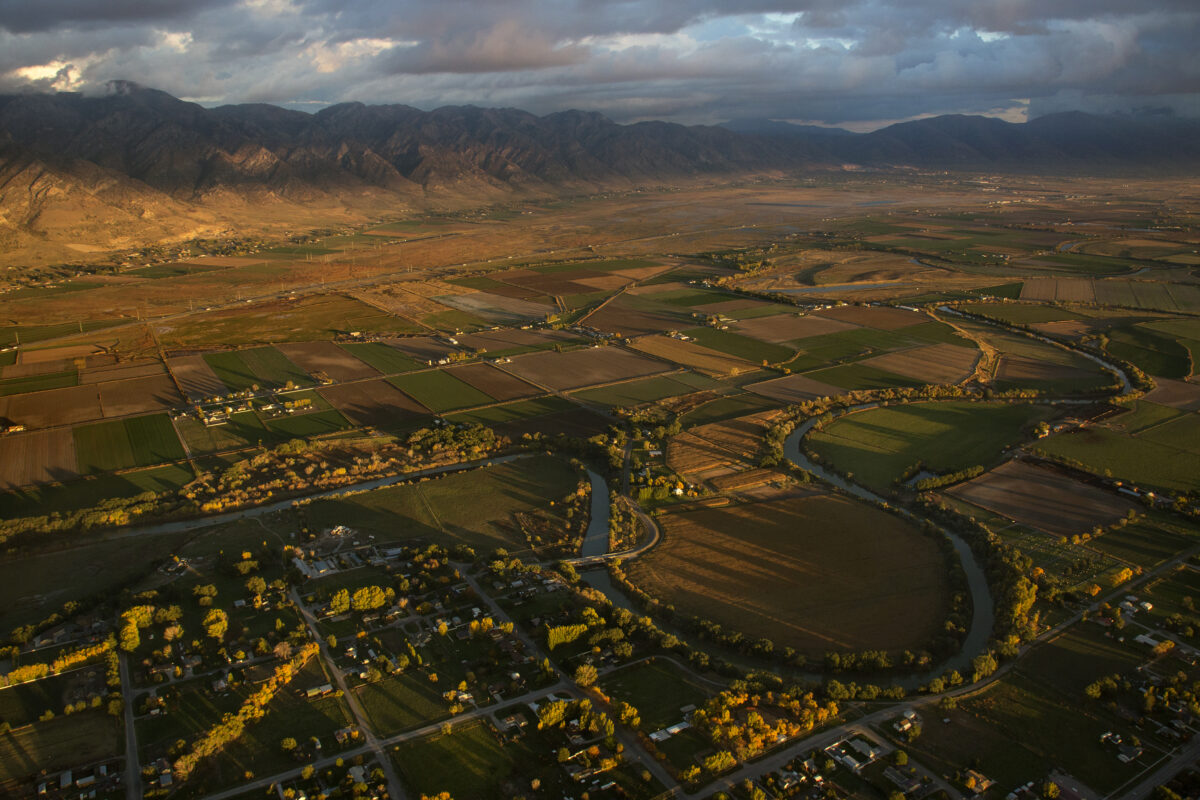Secondary water metering could push back Bear River dam project
The Bear River Development Process Team, which includes Weber Basin Water, announced Monday, Jan. 23, that the Bear River dam project could likely be further delayed due to regional water conservations efforts and programs like secondary metering.
“We believe (the Bear River project) can be pushed out further than 2040,” said Todd Adams, Deputy Director at Utah Division of Water Resources. “There’s not really one thing that’s pushing it here there or anywhere, it’s a combination of things.”
With Utah’s population projected to double by 2050, lawmakers and utility officials are looking to tap new sources of water. A project building dam or series of dams along the Bear River was floated early on, but drew controversy.
The already-sapped Great Salt Lake has dropped by 11 feet due to water diversions on rivers and streams, and the Bear River is its main source of water. Environmental advocates and water managers have also looked to conservation measures and other water sources to boost future supplies.
Factors changing projections for future water needs include lower population projections and improved technologies like smart sprinklers, Adams said. But an effort to install meters on secondary water lines has had a measurable impact on northern Utahns’ water habits.

BRIANA SCROGGINS/Standard-Examiner
Weber Basin Water Engineer Manager Darren Hess holds up a secondary water meter before it was installed in Farmington on Wednesday, March 11, 2015. The Weber Basin Water Conservancy District in Layton plans to install 2,956 of the meters to help track outdoor water use. The project is one of several earmarked for northern Utah, according to the Department of Interior.
“In the Davis and Weber area where secondary meters have been installed, there’s been a reduction of water use by 35 to 40 percent,” Adams said.
In 2011, Weber Basin Water Conservancy District began installing meters on secondary water lines in Northern Utah. Customers currently pay a flat fee for the untreated water used on lawns and gardens because the water district previously had no way to measure use. In five years, the district has installed more than 3,000 meters. They expect to install another 1,200 by May.
The meters seem to be changing behaviors. In a study group of 1,057 meters in South Ogden, secondary water use dropped by nearly 23 percent between 2012 and 2013. In 2016, which set records for an unusually hot and dry summer, outdoor water use was down by 26 percent compared to 2012.

Source: Weber Basin Water Conservancy District
Source: Weber Basin Water Conservancy District
“At one point in time, the early 2000s and late 1990s, we thought we’d need the Bear River project by 2015,” Adams said. “We pushed it back with conservation and other things.”
But that doesn’t mean the Bear River project has been snuffed. The team projected there will still be a need for Bear River water beyond 2040.
“Water agencies have no interest in building that project any sooner than we absolutely have to have it,” said Tage Flint, Weber Basin Water’s general manager.
In the 2015 legislative session, state lawmakers created an account to help finance water infrastructure projects. Delaying a Bear River dam means those funds could be funneled into other projects, like updating existing water infrastructure.
Flint said he has “high hopes” secondary meters will continue to curb per capita water use in Davis and Weber counties, but installing them isn’t cheap. It will cost $100 million to install meters on the district’s 100,000 secondary connections, he said. Still, it’s a drop in the bucket compared to the $1.9 billion projected cost of damming and piping water from the Bear River.
“Secondary metering and the effort we’re putting into that, along with optimizing our current river sources as best as we can, will contribute to pushing that out as far as we can,” Flint said.
The Utah Rivers Council has been one of the most vocal opponents to proposed dams on the Bear River. Zach Frankel with the council said he was skeptical about the timing of the announced delay on the project, since it falls during the first week of the 2017 legislative session.
“We think legislation is forthcoming in this session to fund Bear River development, so we think this is actually intentionally put out there to dissuade people from being involved,” Frankel said. “The real question for the Division (of Water Resources) is, are they going to disband their task force pushing Bear River development?”
Contact Reporter Leia Larsen at 801-625-4289 or llarsen@standard.net. Follow her on Facebook.com/leiaoutside or on Twitter @LeiaLarsen.





